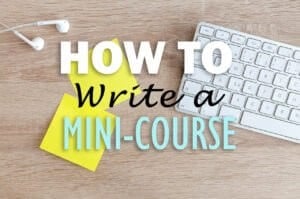Contents
Most people think of emails as a simple tool for communication. Back then, that may have been true. But affiliate marketers today can now utilize this technological innovation to earn money and generate sales. The only catch is that it isn’t as simple as sending out a couple of well-crafted emails a day.
As someone who wants to earn from affiliate programs, you’ll want to try out different methods of promoting products to see what works and what doesn’t. One method that has worked for many online entrepreneurs, including digital marketing gurus Pat Flynn and Neil Patel, are email mini-courses.
What are email mini-courses?
You already know what an email is. You also know what a course is, too. An email course is a combination of the two, and what they do is send smaller chunks of valuable information in a form of a series.
Much like how you take a university course through multiple classes from start to finish, email courses also take you through a specific topic from beginning to end through multiple emails. They’re valuable, loaded with useful information, and they are often free.
Benefits of Having a Mini-Course
Aside from being able to harvest a wave of leads for your email marketing campaign, mini-courses offer plenty of other benefits. Here are some of them:
- You create authority – let’s face it. Having a course makes you sound like a big deal. You can use this to your advantage to create authority with readers.
- You are more likely to be remembered – it’s the same as having a friend who constantly wants to keep in touch with you. The more they see your name pop up in their inbox, the more comfortable they’ll feel with you.
- It’s a great outlet for promoting almost anything – whether you want to promote an affiliate product or a webinar, you can certainly mention them casually or topically in your mini-courses.
Writing Your Very Own Mini-Course
What to Teach
Before you create any type of course, you need to figure out what to teach first. The topic must be valuable, show off your superior knowledge, skills, and abilities, and should ideally generate demand for a longer, more complete course (if you have or want to make one).
An example might be covering the why and how of creating an editorial calendar for your blog posts. This is relevant to almost anyone and everyone who owns a site and wants to earn from blog posts. Another great idea is to target pain points and then offer solutions.
To get a feel of what topics your readers are already interested in, go through your old posts and see what really clicked with them. It’s almost a guarantee that those people will also sign up for your course.
Sample Titles for Mini-Courses:
“The 10-Day Lead Generation Landing Page Course”
“Audience Building 2.0”
“The Idiot’s Course to Generating Traffic from Social Media Posts”
“Make Money Online in 30 Days”
“Conversion Optimization 101”
Choosing Products to Promote
If you’ve already joined an affiliate program, you can market products that are related to the courses. In fact, you can approach the planning a different way: by first deciding on what products you’d like to sell, then coming up with a course topic that can mention these products.
The Email and Course Length
I remember receiving a course that was 60 days long. I only made it to day 15 before I unsubscribed. One problem I had with it was that the content wasn’t compelling. The other, more obvious problem I had was that it was just too long.
Recommended course length: An awesome mini-course doesn’t overwhelm readers. Stick to setting a course that lasts anywhere between 5 to 10 days. Or you can stretch it up to as long as 20 days if you can maintain a good flow from start to finish.
Recommended word count: Keeping the word count between 500 and 1,000 words is ideal. This leaves you enough room to discuss ideas, provide sound advice, and promote your affiliate product.
Using Images and Headings
Whether you should use images in your mini-course depends on personal preference. Sometimes it’s necessary to supply visual representations to reinforce an idea. Other times, they are there to add aesthetic appeal to the email. As a rule, only use images if they add value to the overall content.
Headings keep the entire format clean and well-structured. Make sure you use a heading (or subheading) when transitioning from one topic to the next. This not only makes your email look better, but read better as well.
So, what next?
You’ve now reached the end of our guide. That means you know pretty much all there is to know about writing a kick-ass mini-course for promoting affiliate products. In fact, you can get started on writing your own right now!
Just remember, the best email courses are usually the simplest. Be straightforward with your ideas, offer info they can’t find anywhere else, and always keep things interesting so they won’t click that ‘Unsubscribe’ button.



